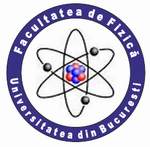| |
 |
UNIVERSITY OF BUCHAREST
FACULTY OF PHYSICS Guest
2025-10-05 22:31 |
 |
|
|
|
Conference: Bucharest University Faculty of Physics 2025 Meeting
Section: Atomic and Molecular Physics. Astrophysics. Applications. Optics, Spectroscopy, Plasma and Lasers
Title:
Investigation of white pigments used in the early neolithic in the romanian plain by electron paramagnetic resonance spectroscopy and discriminant analysis
Authors:
Vasile BERCU (1), Leonard GEBAC (1), Octavian G. DULIU (1,2,3),
Affiliation:
1) University of Bucharest, Faculty of Physics
2) Geological Institute of Romania
3) AccentPro 2000 srl
E-mail
vasile.bercu@fizica.unibuc.ro
Keywords:
Electron paramagnetic resonance, Pottery, Pigments, Discriminant analysis
Abstract:
To explore the reciprocal influences and material exchanges among Early Neolithic to Middle Chalcolithic communities in the Romanian Plain, white pigments from 103 ceramic fragments were analyzed using Electron Paramagnetic Resonance (EPR) spectroscopy. The resulting spectra revealed a complex pattern due to the overlapping signals of Mn²⁺, Fe³⁺, and ferromagnetic iron clusters in varying proportions. Based on this complexity, a novel method was developed to extract five numerical parameters from each spectrum, which were subsequently used in a Discriminant Analysis to compare samples across archaeological sites and cultural traditions.
The analysis revealed that the earliest Neolithic communities (Starčevo-Criș) sourced their white pigments from diverse raw material deposits, whereas later cultures (Vădastra, Hamangia, Boian, and Gumelnița) relied increasingly on localized sources. This shift suggests a growing familiarity with and exploitation of regional resources, favoring those with superior technological properties. The accumulation of such know-how by Chalcolithic groups appears to reflect broader processes, including population movements from Anatolia and the continuity of settlement by both ancestral and descendant prehistoric populations.
Overall, the archaeometric approach presented in this study provides indirect evidence of resource management strategies and cultural interactions among Neolithic and Chalcolithic communities that inhabited the Romanian Plain over a span of more than two millennia (ca. 6200–3800 cal BCE).
|
|
|
|